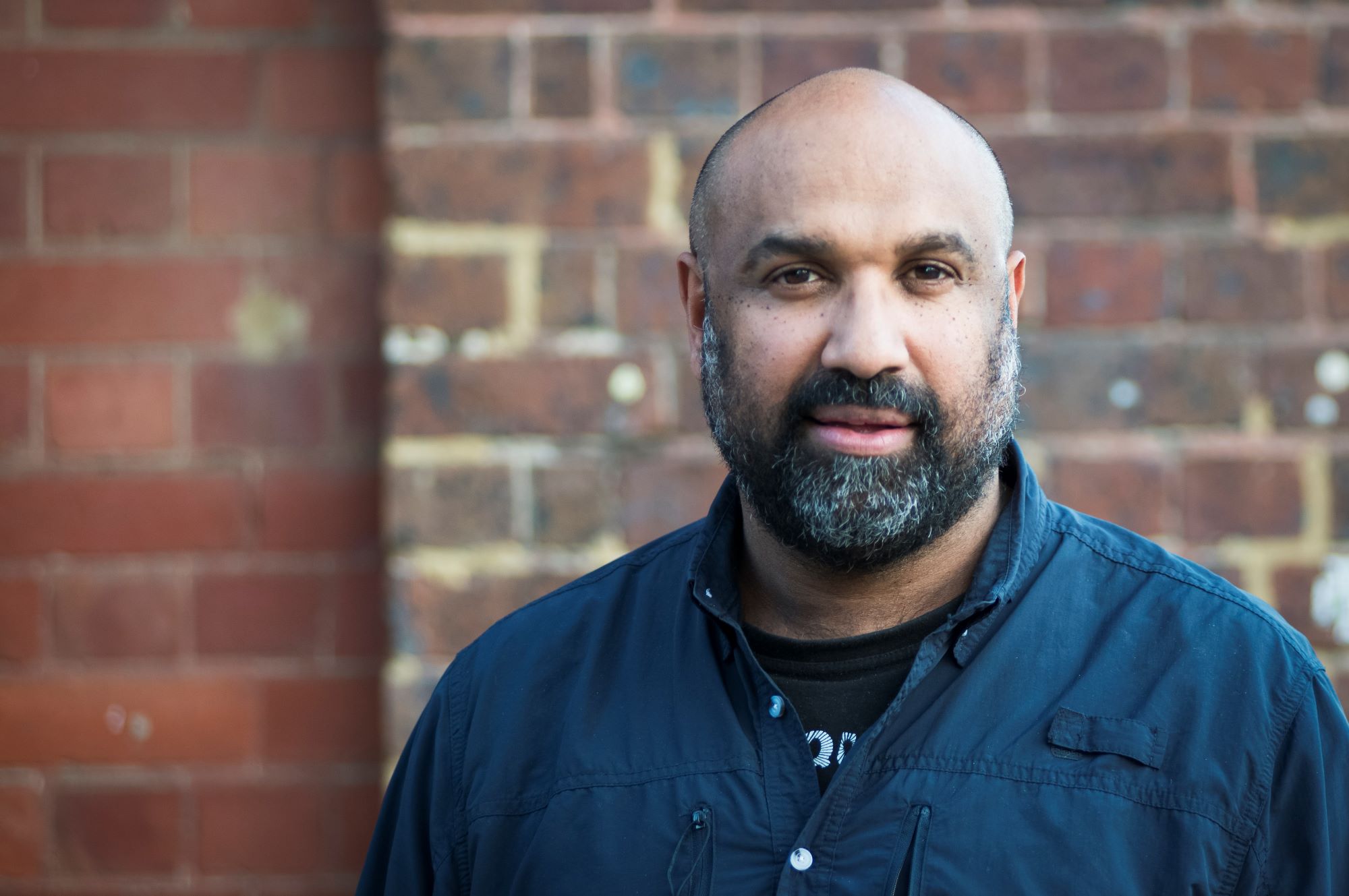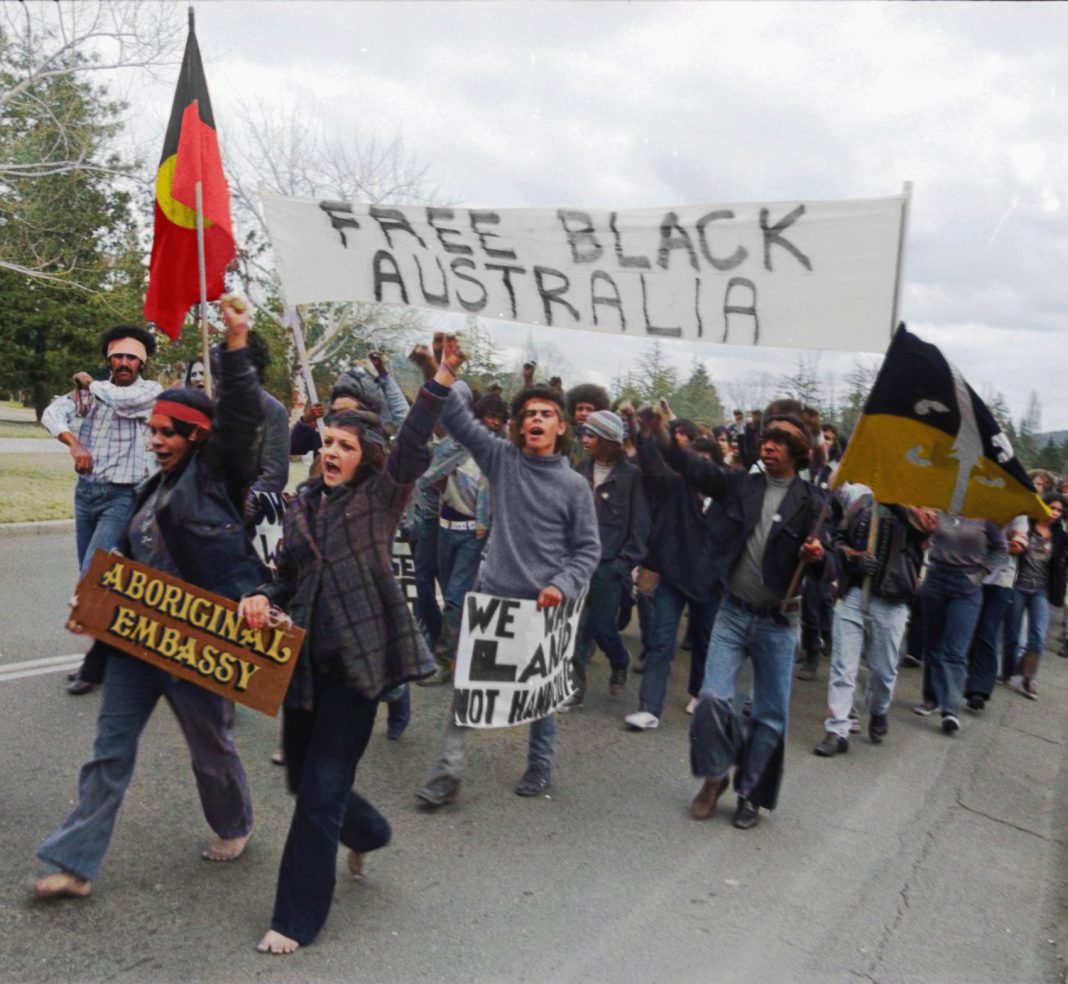We see it whenever we head to the National Triangle, but do you know the origins of the Aboriginal Tent Embassy, the first people to occupy it, their stories, motives and names? These faces and narratives are captured in the documentary We Still Rise, streaming on ABC iView.
The year was 1972 when young Aboriginal activists planted a beach umbrella on the lawns opposite Parliament House, a call to action that was heard around the country. Now more than 50 years later, the Aboriginal Tent Embassy is the oldest continuing protest occupation site in the world.
Located on Ngunnawal Country, the Embassy became a symbol of justice and a way to unite people across Australia in the fight over land rights. Marking its half-century, filmmaker and director John Harvey, a Torres Strait man, wanted to acknowledge the milestone by sharing firsthand accounts from the people who were there when it happened.
“It was an important milestone in terms of why it was established, how it was established, the people involved. From that perspective, it’s important for me, and given that many of the people who were there have since passed, I wanted audiences to hear from them directly; these firsthand accounts,” says Mr Harvey.
The documentary was created using archival material from sources such as the ABC and the National Film and Sound Archive, as well as other less-well preserved documentation.
“We had a recording from Cape York; I managed to get in contact with an anthropologist there who had done work. It was a recording of a lady talking about how the police came to her community in Mapoon in the ‘60s and removed them and burned the houses behind them … We were able to use that recording in the film and to me that was a special thing,” he says.
The documentary captures that first year of the protest and the revolutionary change it brought about for Aboriginal and Torres Strait Islander people. Produced by Tamarind Tree Pictures, the documentary recently received national recognition at the Australian Directors’ Guild Awards, where Mr Harvey received the Best Direction in a TV or SVOD Documentary Series Episode or Documentary One-Off Award. Being recognised by his peers for the power of his work was a humbling experience for the director.
“It’s a real honour to have received the award, it’s really wonderful for the film to get that recognition and our entire team who made the film. Particularly a film like this, it takes a small village of dedicated, really sharp, creative people to bring together.”

As some of the people featured in the film have passed, Mr Harvey and the production team sought permission from family members to use their faces and voices. The team also consulted communities about some of the footage they intended to use.
“It was an interesting process for one of the communities, they were seeing family members who have passed and that’s quite emotional as is. It was difficult to watch some footage so we ended up changing some for that community. Everybody had this feeling of how important it was to share these stories,” says Mr Harvey.
Indigenous activist, academic, writer and actor, Dr Gary Foley, was a cultural consultant on the film. Mr Harvey says they discussed how to create the film in a way that youth of today could relate, such as including contemporary Indigenous music from artists like Dan Sultan, King Stingray and Miiesha.
“Young people today are just doing an extraordinary job in terms of fighting for Indigenous rights; the protest movement being organised by young people is incredible,” he says.
Also featured in the film is the poetry of Oodgeroo Noonuccal and comedic clips from Black Theatre, which was founded by Dr Foley. Weaving in moments of humour was important to Mr Harvey, who believes humour is a key to the resilience of any community.
“It’s the wonderful thing about comedy, it can say those things, it can cut through the noise that has you laughing but it speaks volumes of truths as well. The young activists at the time, including Gary Foley, were interested in how they could get their voices heard directly. They really felt the power of protests and talking directly to the media and, I guess, creating theatre and making films was an extension of that.
“I’m a product of that legacy. Me, as an Indigenous filmmaker today to be able to make a story from that First Nations perspective and make a film and share that, it’s really because of the work that those guys did early on,” says Mr Harvey.
Whilst watching the archival footage, he was inspired by the incredible energy during a time of significant change in Australia. He wanted to capture that from the people who embodied it, not historians or narrators.
“The protest movement had a lot of energy around it; there were protests against apartheid in South Africa, protests for women’s rights, [against] the Vietnam War and conscription,” says Mr Harvey. “I wanted people to feel that energy, to feel what it felt like at the time and try to bring that.”
While the Tent Embassy has remained in place for over 50 years, he says the initial establishment was a very unique time and you would expect the energy to have changed over the years.
“People were fighting for land rights in their communities across the country and what the Tent Embassy did was really kind of galvanise those voices together. Through that simple but very effective act of establishing a Tent Embassy on the lawns of Parliament House, they were able to get both national and international media recognition for the land rights cause,” says Mr Harvey.
We Still Rise is available on ABC iView. To follow the work of John Harvey and his company, Brown Cabs, visit browncabs.com
Canberra Daily is keen to hear from you about a story idea in the Canberra and surrounding region. Click here to submit a news tip.



